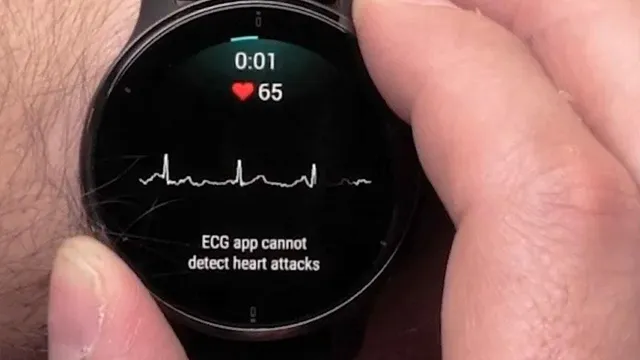
Garmin unveils ECG feature for watch owners in the UK and Switzerland
2025-04-22 00:00- Garmin launched ECG readings for select smartwatch models in the UK and Switzerland.
- ECG feature can detect arrhythmia, key for heart health monitoring.
- This development enhances Garmin's health monitoring technology in wearables.
Express your sentiment!
Insights
In 2025, Garmin expanded its health monitoring capabilities by making electrocardiogram (ECG) readings available to owners of specific watches in the UK and Switzerland. This feature had initially debuted in early 2023 with the Venu 2 Plus, marking Garmin's venture into advanced heart health monitoring for consumer-grade wearables. The ECG feature utilizes specialized hardware that is limited to more advanced models within Garmin's product range, preventing older and lower-end models from accessing this technology. This update reflects Garmin's ongoing commitment to enhancing user health through innovative technology. The ECG functionality allows users to take readings by placing their thumb and forefinger on the watch's metal bezel, which completes a circuit through the body. This monitoring is important for detecting signs of arrhythmia that may indicate serious heart health issues, such as atrial fibrillation (AFib). Garmin emphasizes the importance of this monitoring, especially since AFib can present infrequently during its early stages, making it difficult to identify in settings without continuous monitoring. Susan Lyman, Vice President of Consumer Sales & Marketing at Garmin, highlighted the significance of this feature for personal health management. The release of this feature in the UK and Switzerland follows Garmin's earlier deployment to various EU countries and Australia in January 2025, indicating a strategic rollout of health features across markets. Users in other regions, such as the U.S., also have access to ECG readings by configuring the feature through the Garmin Connect app, broadening Garmin's health tracking capabilities to a global audience. The ECG feature represents a step forward in Garmin’s path to integrate advanced health technology within consumer wearables, thereby promoting preventive health measures. While the introduction of ECG readings marks a significant milestone, users are advised to stay updated with Garmin’s software upgrades, including the latest beta version for the Fenix 8, which introduces new features such as a Multisport category and arrival alerts. However, it's worth noting that accessing the ECG function may be restricted while using beta software, leading users to choose between new software features and health monitoring capabilities. Overall, the ECG feature is a promising development in personal health tracking.
Contexts
The use of electrocardiogram (ECG) monitoring has become increasingly important in the assessment and management of cardiac health. This non-invasive technique allows for continuous observation of the heart's electrical activity, enabling healthcare professionals to identify arrhythmias, ischemic changes, and other cardiac conditions in real-time. By facilitating early detection of potential problems, ECG monitoring serves as a critical tool not only in hospital settings but also in outpatient and home care environments. Patients with known risk factors for cardiovascular disease, such as hypertension, diabetes, or a family history of heart disease, can particularly benefit from regular ECG monitoring to prevent adverse events and facilitate proactive management. In addition to its role in diagnosing acute events, ECG monitoring offers substantial benefits for chronic disease management. Patients with conditions such as atrial fibrillation or heart failure can utilize ECG data to tailor their treatment plans appropriately. Regular monitoring empowers clinicians to make informed decisions about medication adjustments and lifestyle modifications, leading to improved patient outcomes. The ability to track the heart's electrical activity over time also enhances long-term health monitoring, allowing for the identification of trends or changes that may require intervention. Moreover, advances in technology have enabled the development of portable and wearable ECG devices, making monitoring more accessible and convenient for patients. These innovations can transmit data directly to healthcare providers, ensuring timely adjustments to treatment plans while allowing patients greater autonomy over their health. As research continues to explore the implications of telemedicine and remote patient monitoring, ECG technology stands at the forefront of these developments, highlighting the evolving landscape of cardiac care. Overall, the health benefits of ECG monitoring are substantial. It improves the early detection of cardiac issues, facilitates personalized management of chronic conditions, and leverages technology to enhance patient engagement and autonomy. The data obtained from ECG monitoring can inform crucial healthcare decisions, contributing to enhanced patient safety and overall cardiovascular health. As the field continues to advance, integrating continuous ECG monitoring into standard care practices will be essential in promoting better health outcomes and reducing the burden of heart disease.